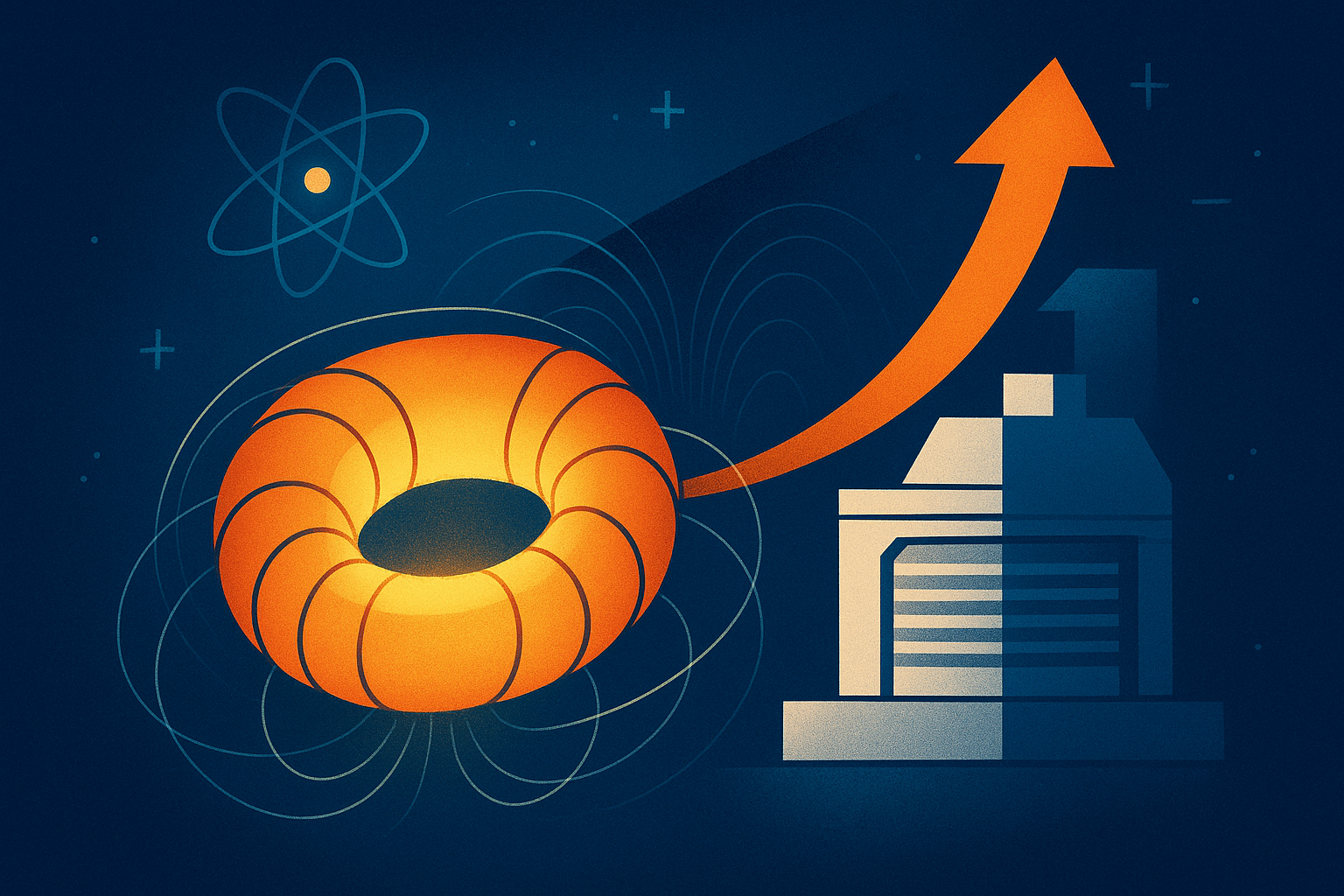The race for clean, limitless energy just took a major leap forward. The U.S. Department of Energy (DOE) confirmed that Commonwealth Fusion Systems (CFS) has successfully completed a performance test of its advanced magnet technology — a critical building block for its SPARC fusion reactor. The validation marks one of the clearest signs yet that fusion energy, long considered a moonshot, may be edging closer to commercial viability.
Why This Matters for Investors
Fusion technology has historically been seen as “always 30 years away.” Yet milestones like this are shortening timelines and attracting capital. CFS, a spinout from MIT, has drawn significant backing from private investors including Bill Gates and Breakthrough Energy Ventures. The DOE’s confirmation of its magnet test not only bolsters technical credibility but also signals that public-private collaboration in next-generation power systems is accelerating.
Morningstar noted that the magnet’s successful validation may act as a catalyst for new rounds of funding, not just for CFS but across the broader fusion and advanced energy ecosystem. If SPARC achieves its goal of demonstrating net energy gain, it could reshape the global energy market and provide a multi-trillion-dollar opportunity over the coming decades.
The Investment Landscape
Investors are increasingly eyeing fusion as a strategic long-term play within the clean energy transition. According to BloombergNEF, global private investment in fusion startups exceeded $6 billion in 2024, with U.S. firms capturing the lion’s share. CFS’s progress stands out because magnets are one of the most critical — and costly — hurdles in commercializing fusion.
In the near term, ancillary industries may be the clearest beneficiaries. These include:
- Advanced materials – superconductors and specialized alloys critical for high-field magnets.
- Energy infrastructure – grid operators, utilities, and engineering firms preparing for integration of new baseload sources.
- Public-private partnerships – defense and aerospace contractors, given the potential dual-use of high-energy systems.
Future Trends to Watch
- Government Support: The DOE has been steadily expanding fusion-related initiatives, with the Inflation Reduction Act earmarking billions for clean tech. Additional grants or loan guarantees could accelerate commercialization.
- Corporate Buy-In: Utilities and energy majors are beginning to explore strategic stakes in fusion ventures, similar to how oil companies have diversified into solar and wind.
- IPO Potential: If CFS or competitors like Helion or TAE Technologies hit critical milestones, public listings or SPAC deals could follow, giving retail investors direct exposure.
Key Investment Insight
Fusion remains a long-duration bet, but milestones like this shift risk perception in meaningful ways. For investors, exposure through venture-backed clean tech funds, advanced materials suppliers, or public companies aligned with grid modernization may offer balanced ways to participate in the upside while limiting downside risk from delays.
What It Means for Your Portfolio
The DOE’s validation of CFS’s magnet technology underscores that fusion is no longer confined to science fiction. With institutional credibility and capital converging, the sector is transitioning from theoretical promise to investable reality. For forward-looking investors, monitoring developments in fusion and its supporting industries could prove one of the most important plays in the clean energy transition.
Stay with MoneyNews.Today for daily insights into the innovations shaping tomorrow’s markets.





